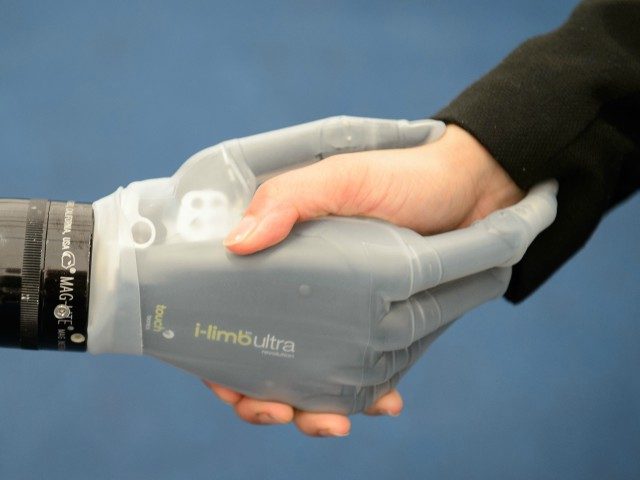Research published in Science Translational Medicine could help mend the disconnect between patients and their prosthetic limbs.
Attaching vibrating devices to muscles at the site of the amputation, researchers were able to create an illusory sensation that mimics the feeling of “kinesthesia,” or movement self-awareness. The experiment allowed patients to “feel” the prosthetic hand to an extent that noticeably improved their ability to use it and restored a measure of intuitive function to the limb. In other words, with just the slightest illusion of touch, their brains could begin to use the limb without the constant conscious focus on each individual manipulation.
Paul Marasco, a biomedical engineer at the Cleveland Clinic and head of its Laboratory for Bionic Integration and lead author on the research, told Gizmodo that “…the individuals we worked with, we were able to provide them with that sensation that they could just move their hands into specific places without ever having looking at it and perform every bit as well as able bodied people.”
Despite decades of research into the field, Marasco and his team were consistently surprised by the results. “We thought that if it worked like it did in an able bodied person, we’d just get one or two joints; we’d get a wrist—something basic,” he said. “But what we found were these complex, multi-digit synergies where the whole hand is moving and they know where their fingers are going and what they’re doing, and they’re adopting these really interesting grip conformations [shapes]. We were totally floored.”
Further, the method has been successfully replicated in separate labs, even as it grows more compact and efficient. Marasco said that they “went from a robotic vibration system that’s the size of a soda can to one that’s now just a little bigger than a matchbox.” Despite that, “it still has the same horsepower, but this one runs on batteries and it can be mounted directly to a prosthetic socket.”
Their goal is to create limbs that feel more like the originals, to break down the barriers that exist between an amputee and an automated limb. With time and effort, Marasco thinks that they may have found the way. “We think that if we can tap into that system and provide them a sense of agency and ownership so that their brain recognizes their device as being human, it will actually overcome these barriers.”

COMMENTS
Please let us know if you're having issues with commenting.